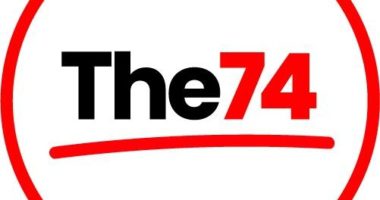What Will It Take to Close the African American-White Completion Gap?
Ed Trust explores that question and identifies top- and bottom-performing institutions
ROYAL OAK, MICH. (March 2, 2017) – More African American students are enrolling in four-year colleges and universities than ever before. But what happens to these students after they arrive on campus? Do they obtain the degrees they are seeking? Not so much. In fact, only about 4 in 10 (41 percent) of African American students who start college as first-time, full-time freshmen earn bachelor’s degrees from those institutions within six years — a rate 22 percentage points below that of their White peers. So what will it take to close the graduation gap? A new report by The Education Trust explores that question, and concludes that eliminating gaps within individual institutions — while important — won’t be enough.
For “A Look at Black Student Success: Identifying Top- and Bottom-Performing Institutions,” Ed Trust researchers analyzed data from non-specialized four-year colleges and universities and found that the average institutional gap is considerably smaller than the national gap — about 5.8 percentage points smaller. Closing institutional gaps would produce nearly 12,000 more African American graduates, annually, and greatly reduce the national African American-White completion gap. But closing the national gap completely also requires an attack on current enrollment patterns — African American students are severely underrepresented in the institutions that graduate most of their students — and a sustained effort to improve completion rates at institutions in which African American students are currently clustered.
The good news is that there are institutions that are serious about ensuring African American students complete, and whose numbers show what a difference that makes. The report names 18 institutions that stand out for high graduation rates — compared with peer institutions — for African American students, and small or no completion gaps between African American and White students. Among them is the University of North Carolina at Greensboro (UNCG), where there is no completion gap. In fact, the graduation rate for African American students exceeds the rate for White students by 3 percentage points. What’s even more impressive is that when compared with its peers, UNCG’s African American student graduation rate is significantly higher — 18.6 percentage points higher — than the rate for African American students at its top 15 peer institutions as determined by Ed Trust’s data tool, CollegeResults.org.
On the other end of the spectrum, Ed Trust identified 21 institutions with low and especially inequitable outcomes for African American students. This includes three universities in Michigan. Among these is Wayne State University, where only about 1 in 10 African American first-time, full-time students complete a bachelor’s degree within six years of enrolling. White students at Wayne State University graduate at nearly four times the rate of African American students.
“After conducting nearly a decade of research on high-performing universities, we know that institutions that have the most success set clear improvement goals, mine their data to help identify problems and refine practices, and optimize the use of whatever resources they have,” said José Luis Santos, Ph.D., vice president of higher education policy and practice at Ed Trust. “University leaders — especially those at the helm of the lowest-performing institutions — must take seriously their responsibility to equitably support the students they enroll. Those at the most selective institutions, whose students are now only 6 percent Black, need to put their resources to work to increase their enrollments of Black students.”
“Where Black students do and don’t enroll is key,” said Andrew H. Nichols, Ph.D., Ed Trust’s director of higher education research and data analytics and lead author of the report. “To completely eradicate the completion gap, more Black students must graduate at institutions that have poor track records in student success, and institutional leaders at selective institutions need to enroll more Black students. Data show over and over again that capable Black students often enroll in colleges beneath their academic levels. This practice of ‘undermatching’ needs to stop.”
For years, Ed Trust data has shown that similar colleges serving similar students can produce vastly different outcomes, proving that what institutions do matters. Take, for example, these two peer institutions with high African American student enrollments: Middle Tennessee State University and Eastern Michigan University. These universities have very similar student bodies with similar levels of preparation. But the graduation rate for African American students at Middle Tennessee State University is more than two times the rate at Eastern Michigan University. And while African American and White students have similar graduation rates at Middle Tennessee State, the completion gap at Eastern Michigan is nearly 25 percentage points.
“Michigan’s future success depends on the success of our young people,” said Amber Arellano, executive director of The Education Trust-Midwest. “This report highlights just how much more is needed to support African American students throughout their education – including at colleges and universities.”
# # #
The Education Trust-Midwest is a nonpartisan research and advocacy organization dedicated to improving outcomes for all Michigan students, especially for African American, Latino, American Indian, and low-income students. The Education Trust-Midwest believes in the power of intelligent education policy and practices — informed by data, research, and the successes of other states — to make Michigan a top ten education state for all students.








